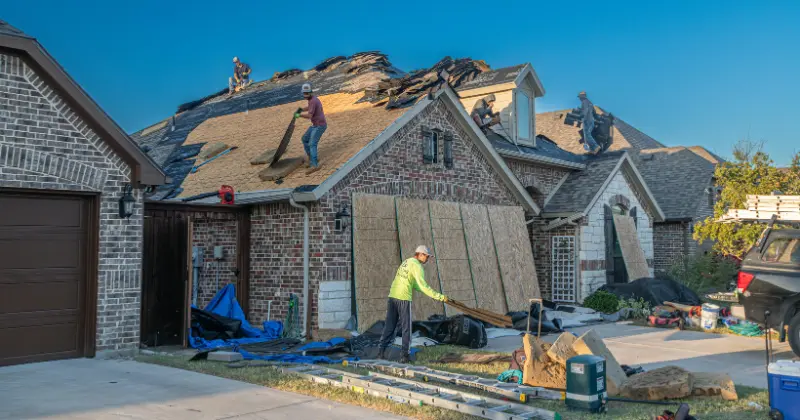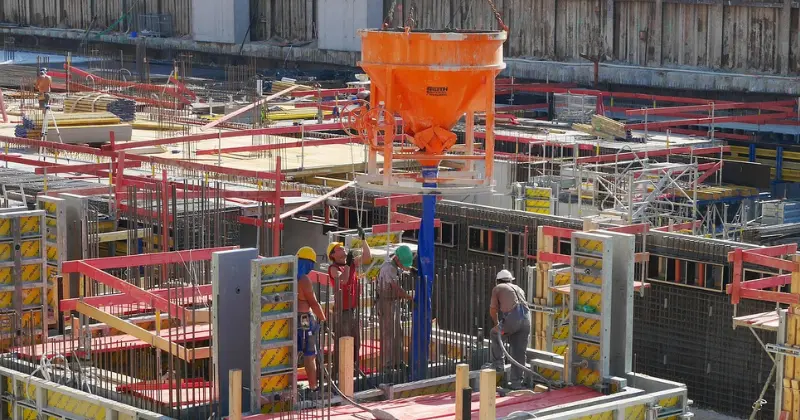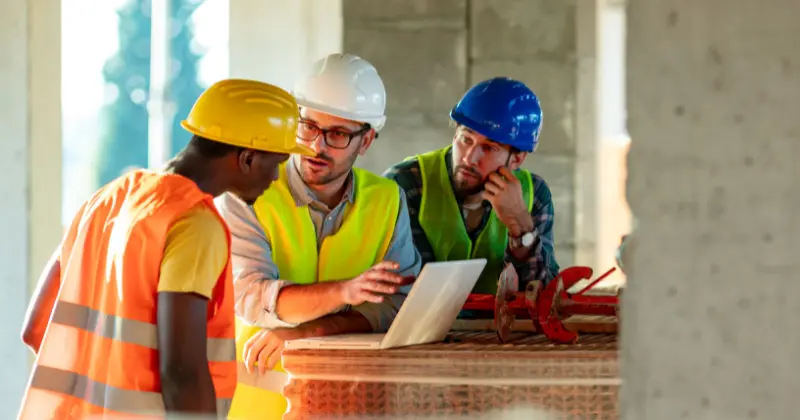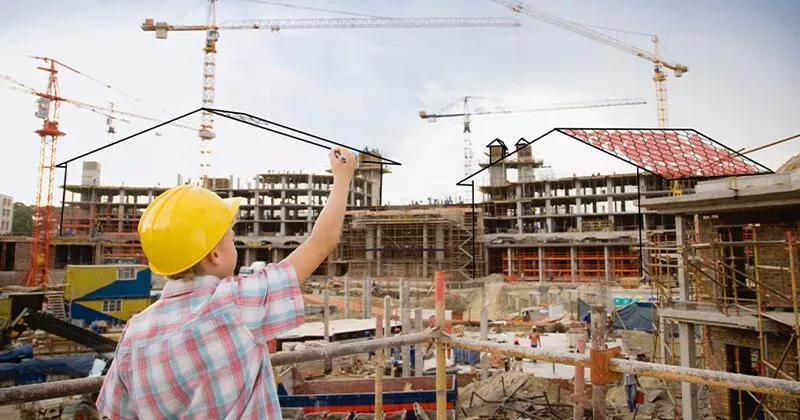11 mins read
10 Tips to Make Your Preconstruction Meeting More Productive

Construction meetings are sometimes thought of as inconveniences that bring important activities to a halt while team leaders gather in conference rooms reviewing slides and reports. While this perception may be true in some instances, preconstruction meetings should always be viewed as essential early-stage activities that help to set projects on the right course.
In this blog post, we explain what a preconstruction meeting is and why it is important. We also provide a list of key topics and activities that should always be included in the meeting agenda and ensure effective preconstruction planning.
What is a Preconstruction Meeting?
A preconstruction meeting is a gathering of the whole project team just prior to execution. These comprehensive meetings bring key stakeholders together to discuss project details, make introductions, plan strategies, and review any questions that arise in the discussion.
Depending on the project team structure and client preferences, preconstruction meetings can be planned and led by the construction project manager, the designer, the architect, or the client. Although technology has made virtual meetings possible, most are still held in person so that the team can communicate directly and build relationships prior to breaking ground.
Who attends preconstruction meetings?
In addition to the project leaders, contractors, and subcontractors, attendees often include safety officers, quality control personnel, quantity surveyors, accountants, and consultants with a vested interest in the project. Human resource managers might also attend to gather information related to critical staffing and onboarding tasks, while attorneys might attend to provide input on permits, zoning, and environmental regulations.
Purpose of a Preconstruction Meeting
Personal introductions and networking opportunities are always useful, but preconstruction meetings also serve a more vital purpose by allowing all stakeholders to review project details at the same time and align on the most critical logistical, scheduling, and budget issues. The meeting helps each attendee understand the expectations for their specific role while providing an opportunity to:
- Identify risk factors related to resources, costs, and project unknowns
- Define and communicate the complete project scope
- Review quality standards for materials and workmanship
- Allow the client to set team-wide expectations
Aligning on these issues early prevents miscommunication, delays, and disputes that can quickly derail project schedules and budgets during the construction phase. A well-run meeting will also reveal obstacles that must be addressed prior to beginning construction.
How to Prepare for a Preconstruction Meeting
The time and travel required for teams to attend preconstruction meetings are only worthwhile when the gatherings are well-planned and time is allotted to the right subjects. An agenda that describes the topics to be discussed, along with the date, time, and presenters, should be created and distributed well ahead of the actual meeting. Additional pre-meeting activities that ensure time is spent wisely include:
- Making key documents such as the contract and drawing packet readily available.
- Preparing visual aids and presentation materials that make complex information easier to understand.
- Setting aside question & answer (Q&A) periods so that everyone has an opportunity to request clarification or voice concerns.
- Creating a preconstruction activities list that includes the most essential topics to cover in the meeting.
Preconstruction Meeting Activities List

Smaller projects might only need a few hours to cover the entire agenda, while complex commercial building or infrastructure kickoffs might take a full day (or more). Regardless of the project size or scope, the meeting should be conducted based on a preconstruction activities list that covers the following activities:
1. Define roles and responsibilities
While it might seem obvious, not all team members will fully understand their roles and responsibilities prior to the preconstruction meeting. Contract terms should be reviewed in detail to communicate basic expectations with the client present. Discussing responsibilities early on also makes it easier to adjust contract terms or specific roles as needed prior to construction.
This segment of the meeting should also include a discussion on project leadership and the proper communication channels to be followed for incident reporting, scope changes, and other common occurrences.
2. Review the Scope of Work (SOW)
The preconstruction meeting should dedicate time to reviewing the full scope of work (SOW), including the overall project purpose and objectives, and details on specific tasks required for completion. This allows everyone to understand what success looks like based on a concept of the finished structure. Additional SOW details that should be reviewed include:
- Metrics and key performance indicators (KPIs) that will be tracked by the project manager and other stakeholders to monitor progress and cost performance.
- Project schedules and timelines that define start and end dates for the overall project, along with important milestones and deadlines.
- Architectural drawings, models, and visual aids that give meeting attendees a close-up preview of the finished product.
The SOW discussion should also include a discussion on exclusions, to help everyone understand what activities are not included in the SOW.
3. Discuss all material specifications
Material quality, inspection, and delivery issues impact many different stakeholders, and preconstruction meetings provide a perfect opportunity to discuss and align on material handling norms and practices. Reviewing material specifications with the cross-functional team ensures procurement and vendor qualification strategies are in place, and adequate resources are available for material storage and quality control.
4. Confirm cost estimates and budget
Despite the integration of digital estimation & BIM takeoff software to make cost estimates more accurate and efficient, project costing and budgeting are still cross-functional tasks that require strong team collaboration. Including these topics in the preconstruction activities list allows any material, labor, equipment, or permitting concerns that impact the budget to be discussed and mitigated with the full team on hand.
5. Communicate the schedule
The SOW discussion should include a deep dive into the project schedule, so that contractors, subcontractors, and consultants can be made aware of any potential timing conflicts or bottlenecks. During the meeting, in-person coordination on resource issues can lead to proactive schedule adjustments that allow the project to proceed smoothly. This includes the identification of unrealistic timelines for work items within the overall schedule.
6. Optimize construction site logistics
Site logistics include planning, execution, transport, and resource allocation activities that must be well-executed throughout the project to avoid unnecessary delays, safety issues, or cost overruns. Logistics are especially important for complex structures that encompass precast concrete and other elements that require coordination between off-site vendors, heavy equipment operators, and engineering teams. Targeted planning sessions within the preconstruction meeting can help the team get a head start as they work to optimize logistics.
7. Consider risk management
Alignment on construction risk management strategies and tools is another key topic on the preconstruction activities list that benefits from the input of all team members. Inclement weather, labor shortages, and material quality issues are among thousands of factors that can easily derail construction progress. Brainstorming these issues collectively during the meeting provides additional focus while helping to establish an appropriate contingency budget.
8. Discuss payment and contract conditions
While a general discussion of contract terms is always advisable as part of the broader meeting scope, payment terms should be given additional time so that contractors can plan their budgets and avoid any cash flow issues during construction. Discussing payment terms at this early stage prevents misunderstandings and conflicts while streamlining the invoice processing in advance.
9. Review construction documents
The project contract and drawings are among the important construction documents that should be reviewed during the meeting, but this scope can be expanded to include permits, safety policies, and other documents the entire team should be familiar with. Digital document control and effective construction change management tools and practices should also be covered, to ensure everyone has adequate document access.
10. Draft meeting minutes and follow-up
The most important part of any meeting often occurs after it has concluded. Comprehensive meeting minutes provide a recap of discussion topics and shared information, along with any action items and follow-up activities identified during the discussion. Tracking these actions to conclusion can be the first of many essential project management tasks.
Conclusion
Preconstruction meetings are a traditional project activity that still brings value today. The power of in-person conversations and live presentations can set a positive tone that ensures a successful project outcome. Software and technology have made document-sharing, planning, and collaboration more effective both during and after the preconstruction meeting.
RIB Candy is an estimating, planning, and project control solution that eliminates departmental silos by improving data integrity and visibility. Advanced planning features seamlessly integrate time and money, leveraging powerful resource allocation and progress tracking capabilities. The integrated, cloud-based platform also provides instant access to purchase orders, equipment status, cost data, and project documentation.
Get your free demo today and discover how RIB Candy can help you skyrocket your success!
Get My Free RIB Candy Demo Now
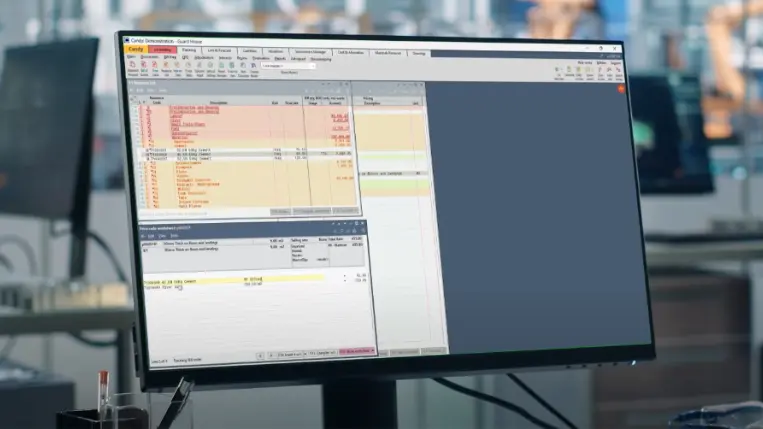
Most Recent
11 mins read
10 mins read
10 mins read
29 mins read
Blog Categories

Ebook




